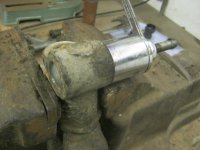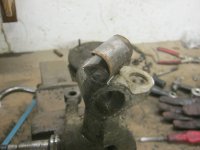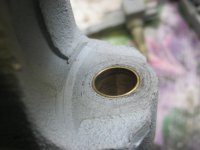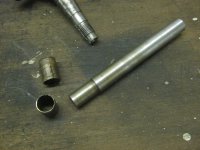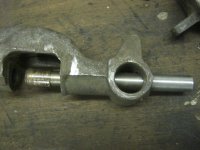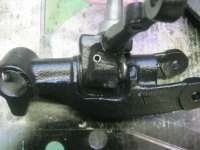Ok just to confirm.
One of the grooved washers goes on top with the rubber o ring around it.
Then the other grooved washer goes on the bottom with a plain washer underneath to pack out the gap.
That's it, that's all that comes in the kit, 3 washers & 1 o ring.
One of the grooved washers goes on top with the rubber o ring around it.
Then the other grooved washer goes on the bottom with a plain washer underneath to pack out the gap.
That's it, that's all that comes in the kit, 3 washers & 1 o ring.



